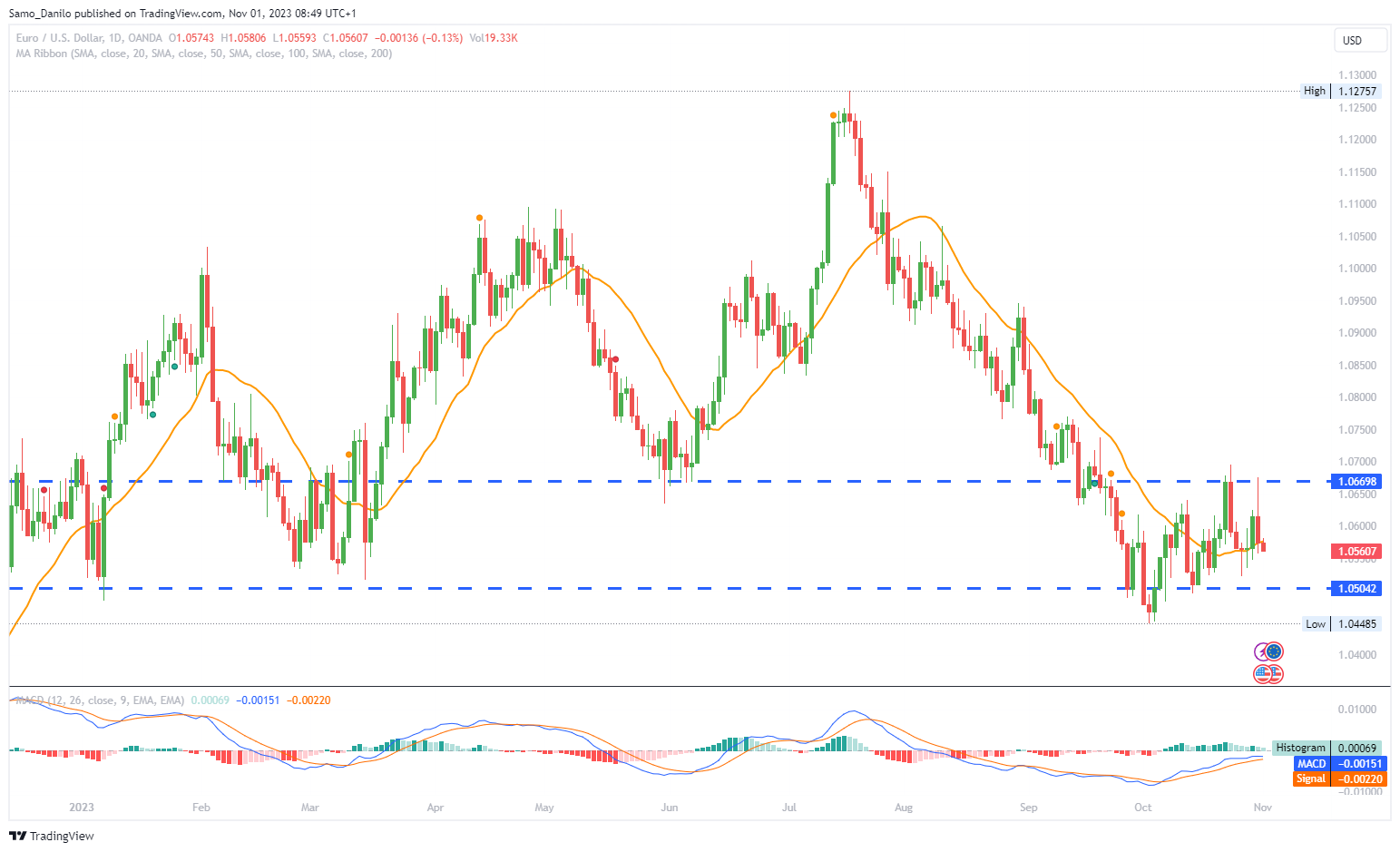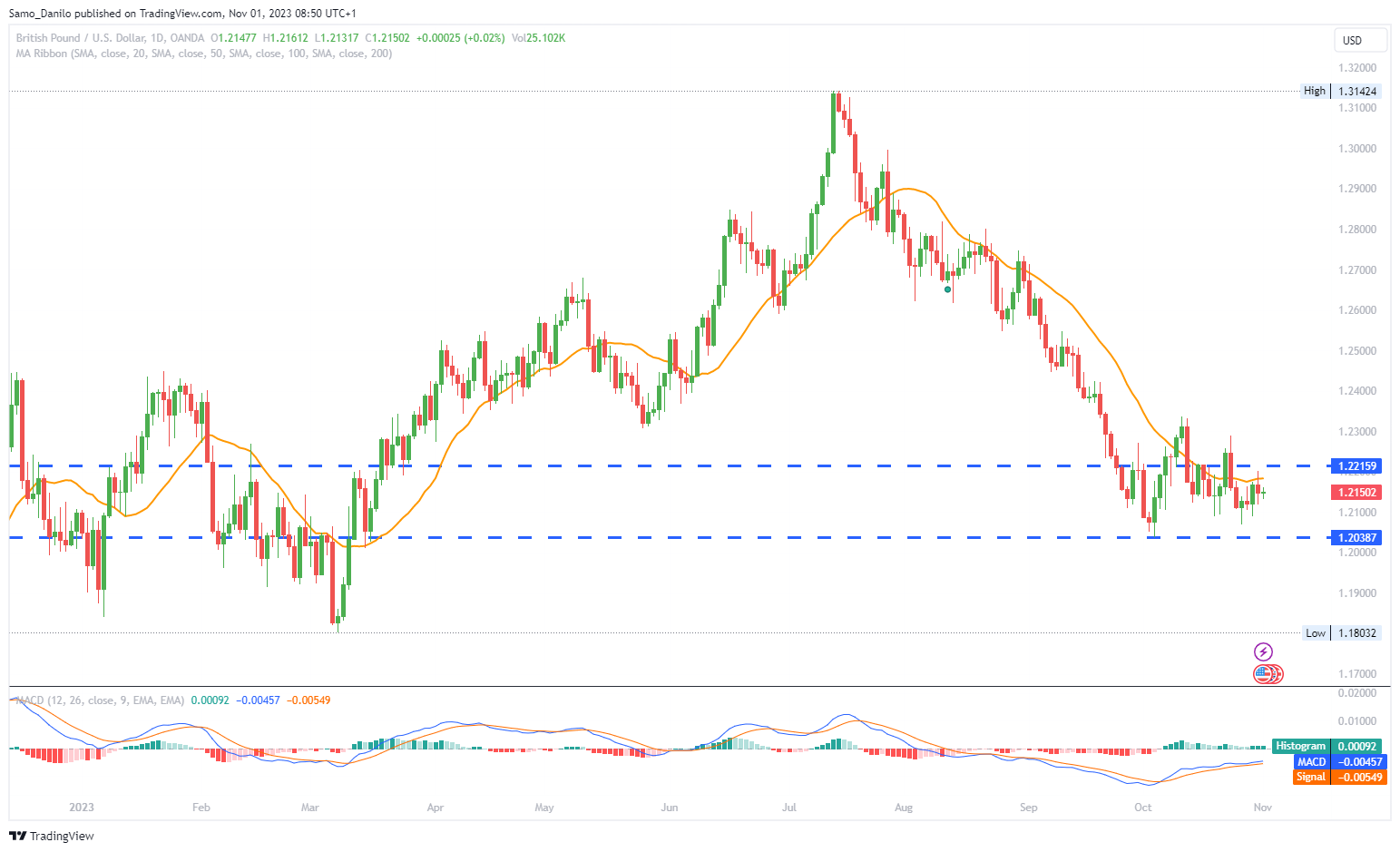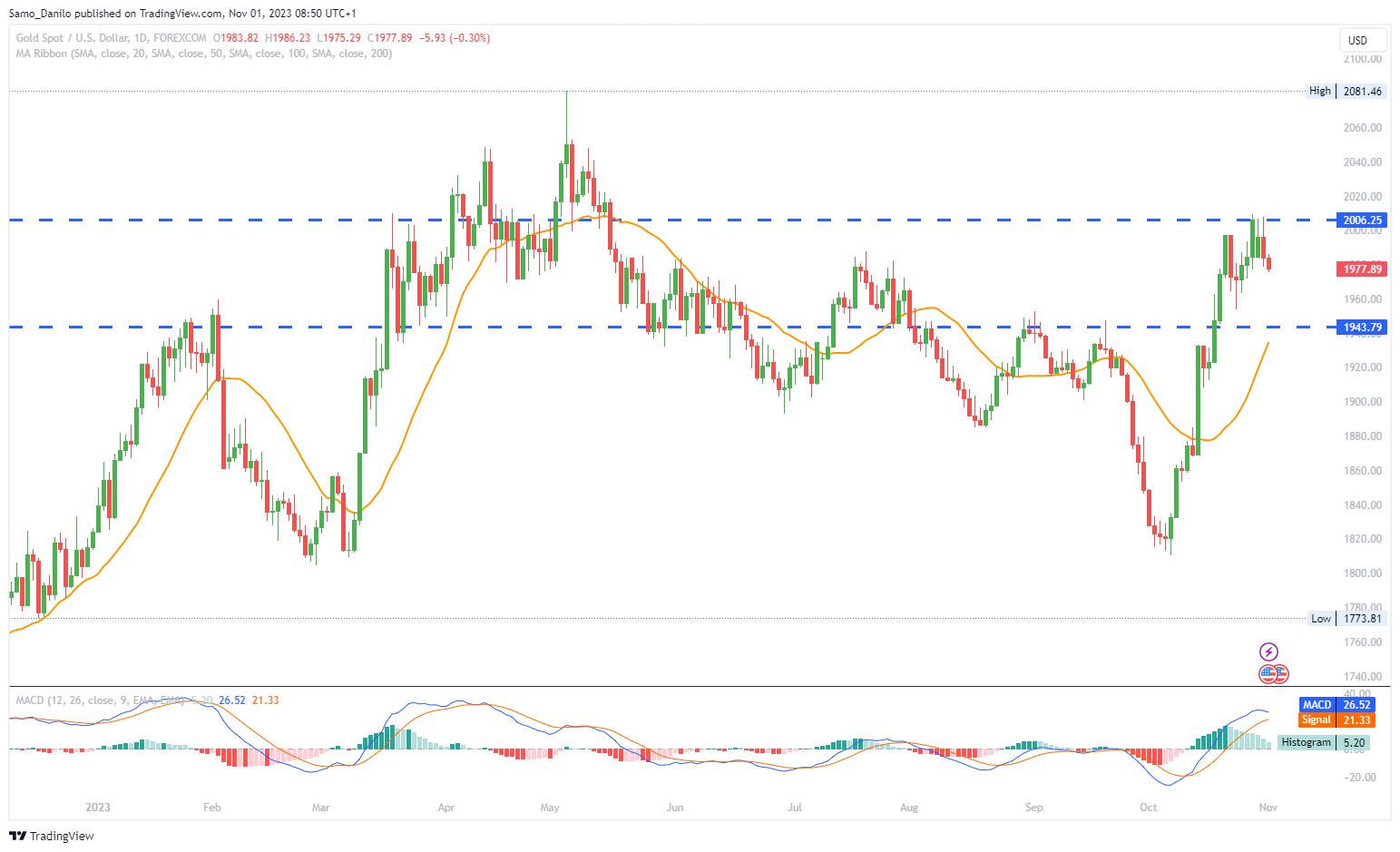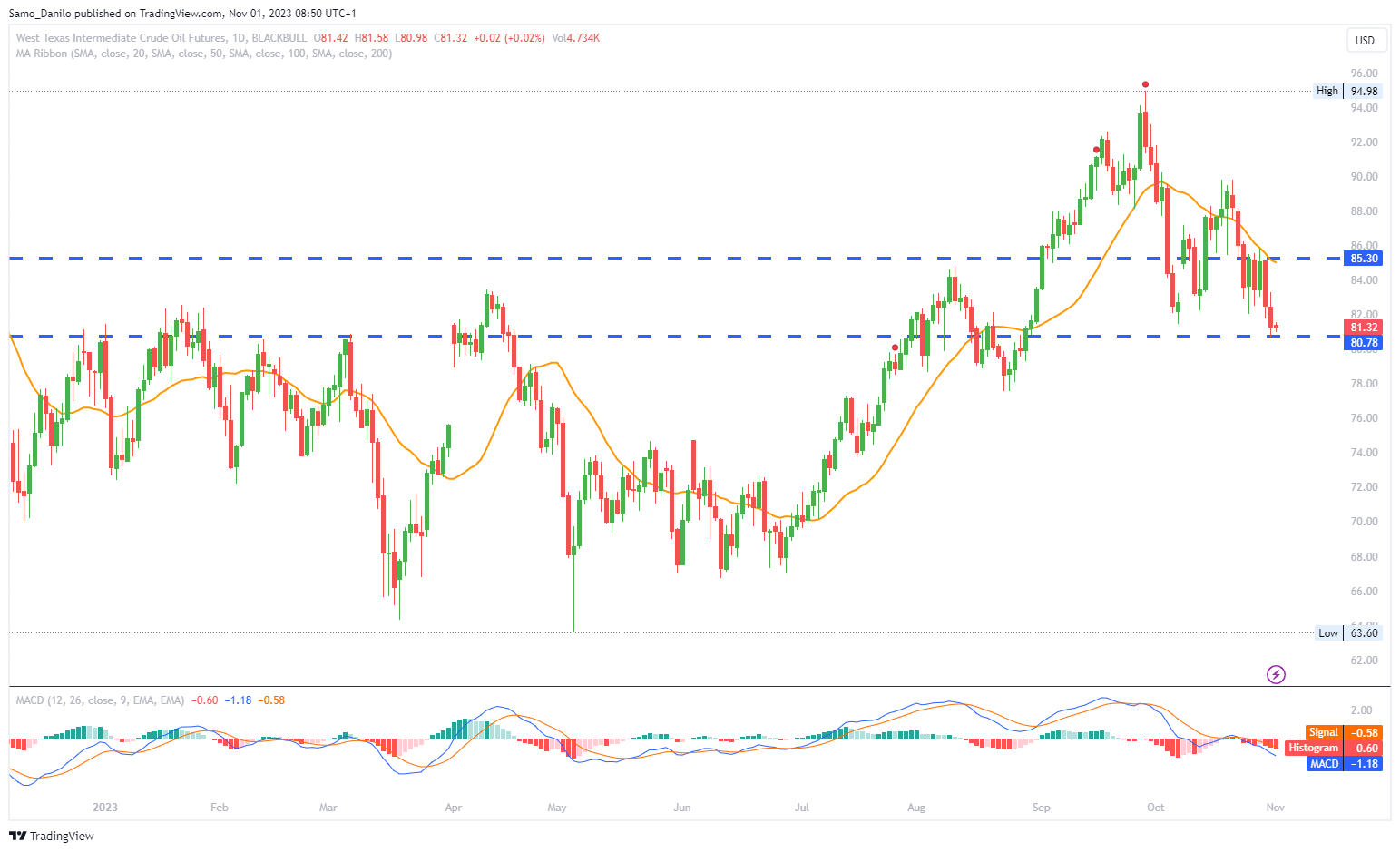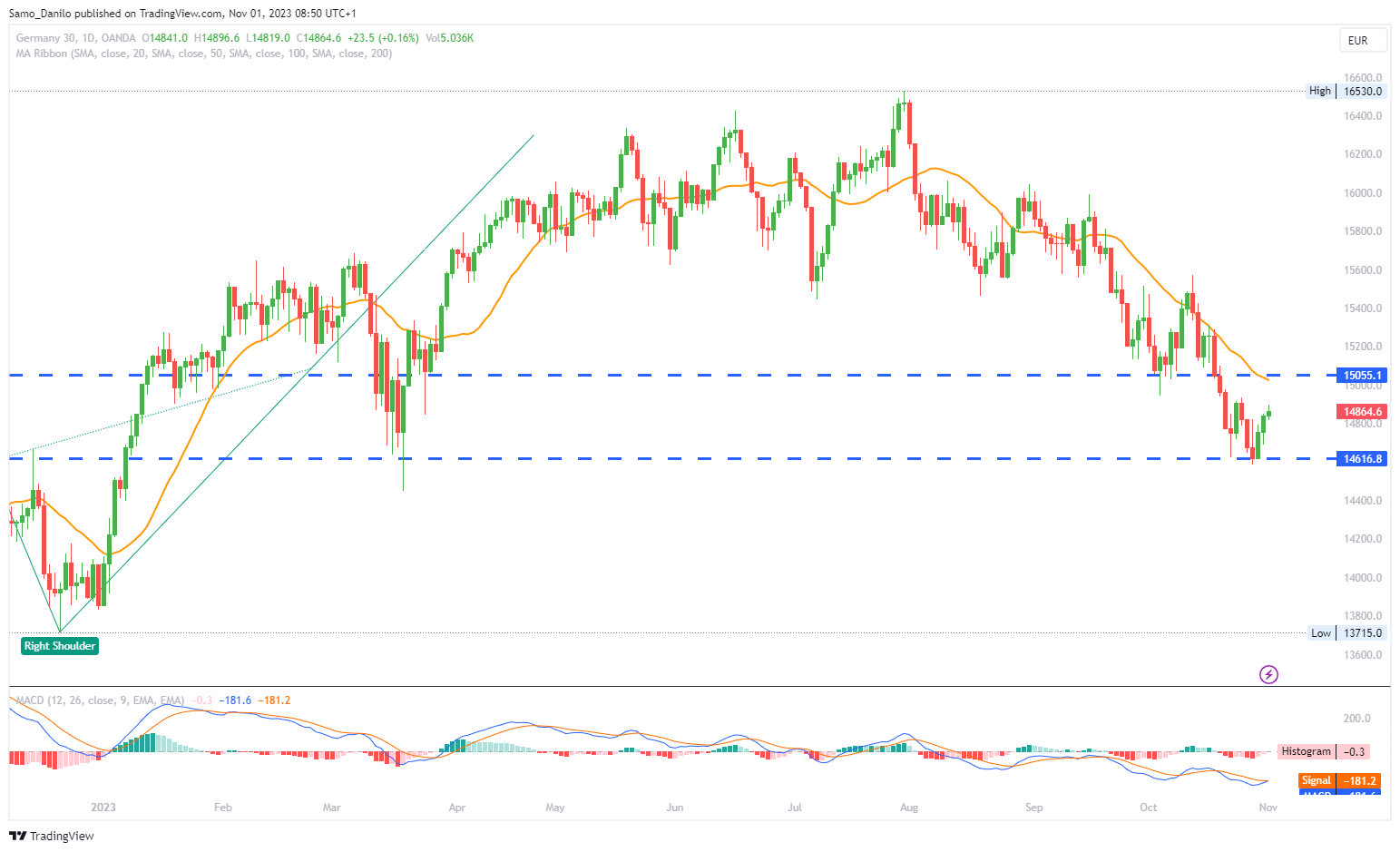EURUSD
- The EUR/USD is trading with a bearish bias, sitting below the 1.0600 level, currently at 1.0573. This bearish sentiment is due to a cautious risk tone and a strong US Dollar in anticipation of the upcoming Federal Reserve (Fed) interest rate decision and key US jobs data.
- Data from the Eurozone revealed a further slowdown in inflation for October. The annual inflation rate dropped to 2.9%, significantly down from the previous rate of 4.8%, and below market expectations of 3%. The core inflation rate also fell to 4.2%, aligning with expectations. These figures suggest that the European Central Bank (ECB) is likely to maintain its current monetary policy in December.
- Data from the US on Tuesday was mixed. It included a decline in consumer confidence, a 1.1% increase in the Employment Cost Index during the third quarter, and a decrease in the Chicago Purchasing Managers' Index (PMI) to 44. However, these numbers did not have a significant impact on the market.
- Wednesday brings the release of the ADP employment report and the ISM Manufacturing PMI, which are scheduled before the Federal Open Market Committee (FOMC) statement. The Fed is widely expected to keep interest rates unchanged. However, all eyes are on the statements and comments made by Fed Chair Jerome Powell and other officials, which could lead to increased market volatility.
- Market sentiment, risk appetite, and the US Dollar's strength have a significant impact on EUR/USD, especially in the lead-up to crucial economic and monetary policy events.
Closing statement: In summary, EUR/USD is facing downward pressure amid cautious risk sentiment and a strong US Dollar ahead of the Fed's interest rate decision and key US jobs data. Eurozone inflation figures have solidified expectations for the ECB to maintain its current policy, while mixed US data and the FOMC meeting on the horizon are expected to bring increased volatility to the pair.
GBPUSD
- GBP/USD is trading at around 1.2150 during the European morning on Wednesday, indicating a bearish trend. This downtrend is influenced by market expectations surrounding the Bank of England (BoE) meeting and concerns about the UK's economic outlook.
- GBP/USD is trading at around 1.2150 during the European morning on Wednesday, indicating a bearish trend. This downtrend is influenced by market expectations surrounding the Bank of England (BoE) meeting and concerns about the UK's economic outlook.
- Following the BoE meeting, Governor Andrew Bailey might provide insights into the latest economic forecasts for the UK and the future of monetary policy. These statements will be closely watched by investors for hints regarding the central bank's outlook.
- Weaker economic data from the UK, combined with persistent inflation, are creating headwinds for the British Pound (GBP) and, consequently, impacting the GBP/USD pair's performance.
- Investors are awaiting key US data, including the ADP employment report, JOLTS Job Openings, and the ISM Manufacturing Purchasing Managers' Index (PMI), ahead of the Federal Open Market Committee (FOMC) meeting scheduled for Wednesday. These data releases and the FOMC meeting are expected to influence GBP/USD trading dynamics.
| SMA (20) | Slightly Rising |
|
| RSI (14) | Neutral | |
| MACD (12, 26, 9) | Slightly Rising |
|
Closing statement: GBP/USD is trading in a lower range as the market anticipates the BoE's decision to maintain interest rates and expresses concerns about the UK's economic prospects. The currency pair is also influenced by UK economic data and inflation trends, while upcoming US data and the FOMC meeting are likely to add to its volatility.
GOLD
- Gold price has experienced a three-day decline, marking a fresh weekly low on Wednesday. This decline suggests a bearish trend for the precious metal.
- Receding safe-haven demand is a significant factor contributing to the downward pressure on gold. This could be due to improving market sentiment or diminishing geopolitical concerns.
- Concerns about China's economic conditions are playing a role in supporting gold as a safe-haven asset. Amidst uncertainties about China's growth, investors are turning to gold for security.
- The World Bank has made a grim global economic forecast, which is influencing market sentiment. Amid ongoing conflicts in the Middle East and their impact on oil prices, investors are seeking refuge in safe-haven assets like the US Dollar rather than gold.
- The most significant event risk is the upcoming US Federal Reserve interest rate decision. A rate pause is widely anticipated, but the key factor driving market dynamics will be the statements made by Fed Chair Jerome Powell regarding the future interest rate path and the economic and inflation outlook. These remarks are expected to be pivotal in determining the direction of the US Dollar and, consequently, gold prices.
| SMA (20) | Rising |
|
|
| RSI (14) | Slightly Falling |
| |
| MACD (12, 26, 9) | Rising |
|
|
Closing statement:In summary, gold prices are on a downward trend due to a decline in safe-haven demand and expectations of a hawkish Fed stance. China's economic challenges provide some support for gold, but the US Dollar remains the preferred safe-haven asset in the current market environment. All eyes are on the Fed decision and the guidance provided by Jerome Powell.
CRUDE OIL
- West Texas Intermediate (WTI) Crude Oil prices have been on a negative trend for the third consecutive day, and they are trading near a two-month low.
- The downward pressure on oil prices is partly due to a perceived ease in global supply concerns. A Reuters survey indicated that OPEC crude output increased by 180,000 barrels per day (bpd) in October. Additionally, the Energy Information Administration (EIA) reported a new monthly record for US field production of crude oil in August.
- Concerns about slowing fuel demand in the world's top oil consumer, China, are contributing to the downward pressure on oil prices. Weaker business activity data from China, particularly the contraction in the manufacturing sector in October, is causing concerns about the demand for oil.
- A Caixin-sponsored survey supported the official figures, confirming that manufacturing activity in China contracted in October. This contraction in one of the world's largest oil-consuming markets is adding to concerns about fuel demand.
| SMA (20) | Falling |
|
|
| RSI (14) | Slightly Falling |
| |
| MACD (12, 26, 9) | Slightly Falling |
|
Closing statement: In summary, Crude Oil prices are on a downward trend due to a combination of factors, including an increase in OPEC output, a record high in US field production, and concerns about slowing fuel demand, particularly in China. These factors are contributing to a bearish outlook for oil prices.
DAX
- Economic data from Germany and the Eurozone has been disappointing. German retail sales unexpectedly declined in September, which has led to concerns about a prolonged economic recession. Additionally, GDP figures from France and the Eurozone also disappointed, further fueling economic worries.
- Despite the disappointing economic indicators, corporate earnings have provided some resilience to the DAX. Companies like BASF saw their stock prices rise despite a fall in Q3 core earnings and a downgrade to the full-year outlook. Qiagen also contributed positively with better-than-expected earnings and revenues.
- There are no significant economic indicators from the Eurozone to influence investor sentiment in the near term.
- The DAX will be influenced by the US labor market data scheduled for Wednesday. The ADP employment change and JOLTs Job Openings will be closely watched by investors.
- The near-term trends for the DAX are expected to depend on the Federal Reserve's interest rate decision. A hawkish stance from the Fed could impact the appetite for DAX-listed stocks, particularly in the context of a deteriorating macroeconomic environment.
| SMA (20) | Falling |
|
|
| RSI (14) | Slightly Rising |
| |
| MACD (12, 26, 9) | Slightly Rising |
|
Closing statement: In summary, the DAX is facing challenges due to weak economic data in Europe, but corporate earnings have provided some support. The focus will soon shift to the US labour market data and the Federal Reserve's interest rate decision, which are expected to influence the DAX's performance.
